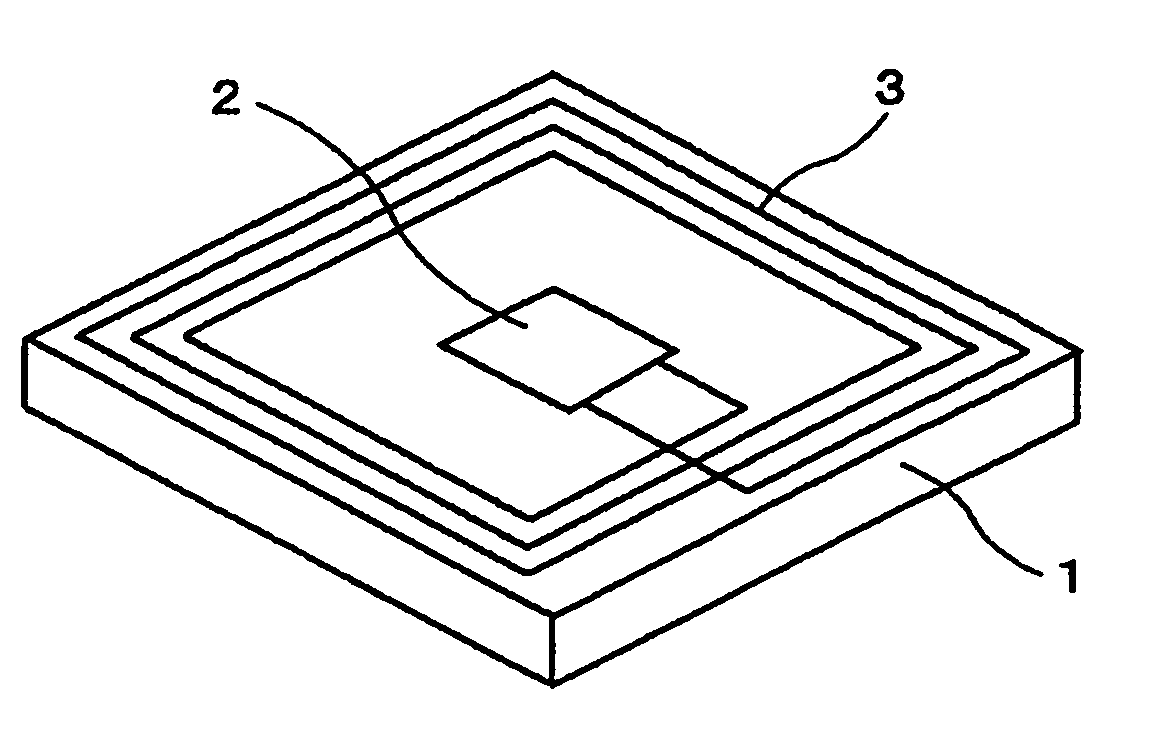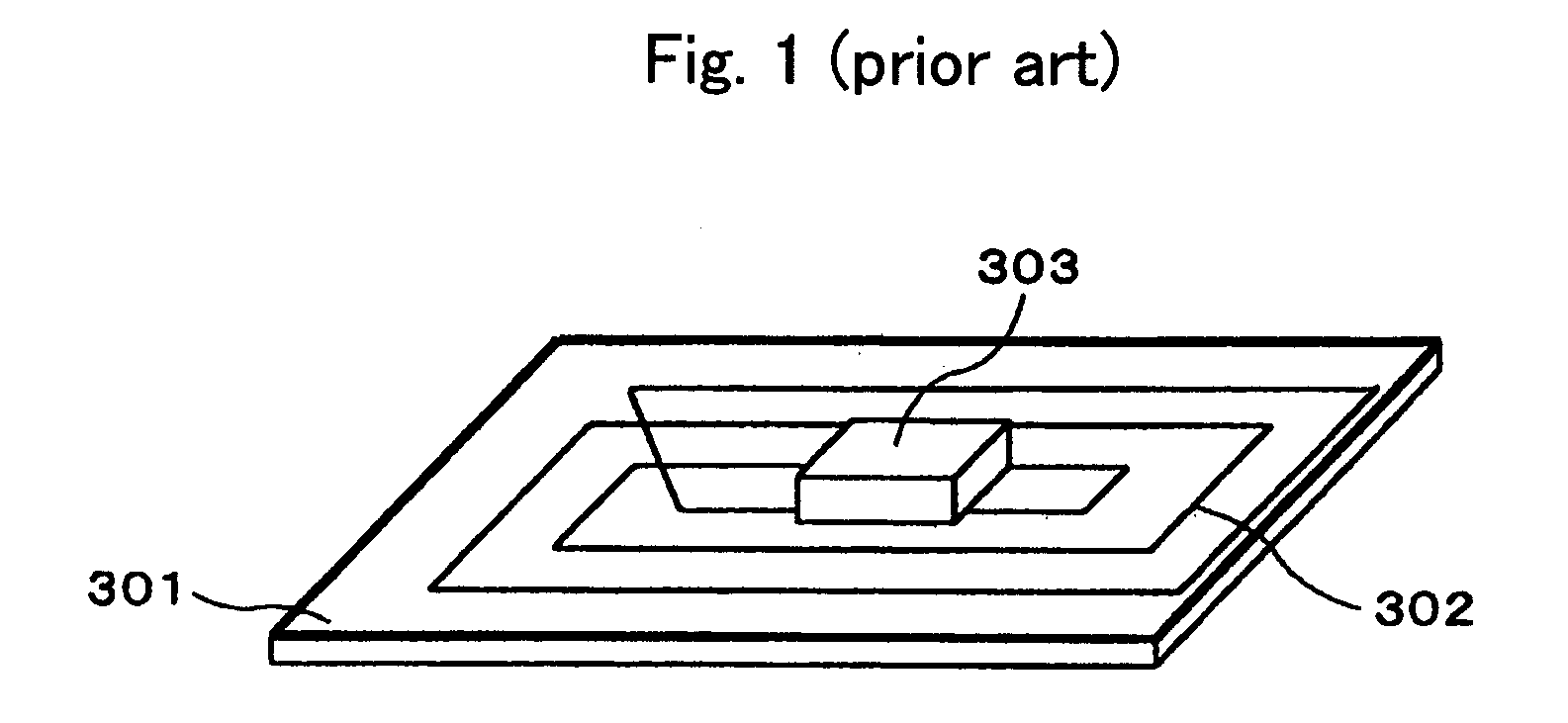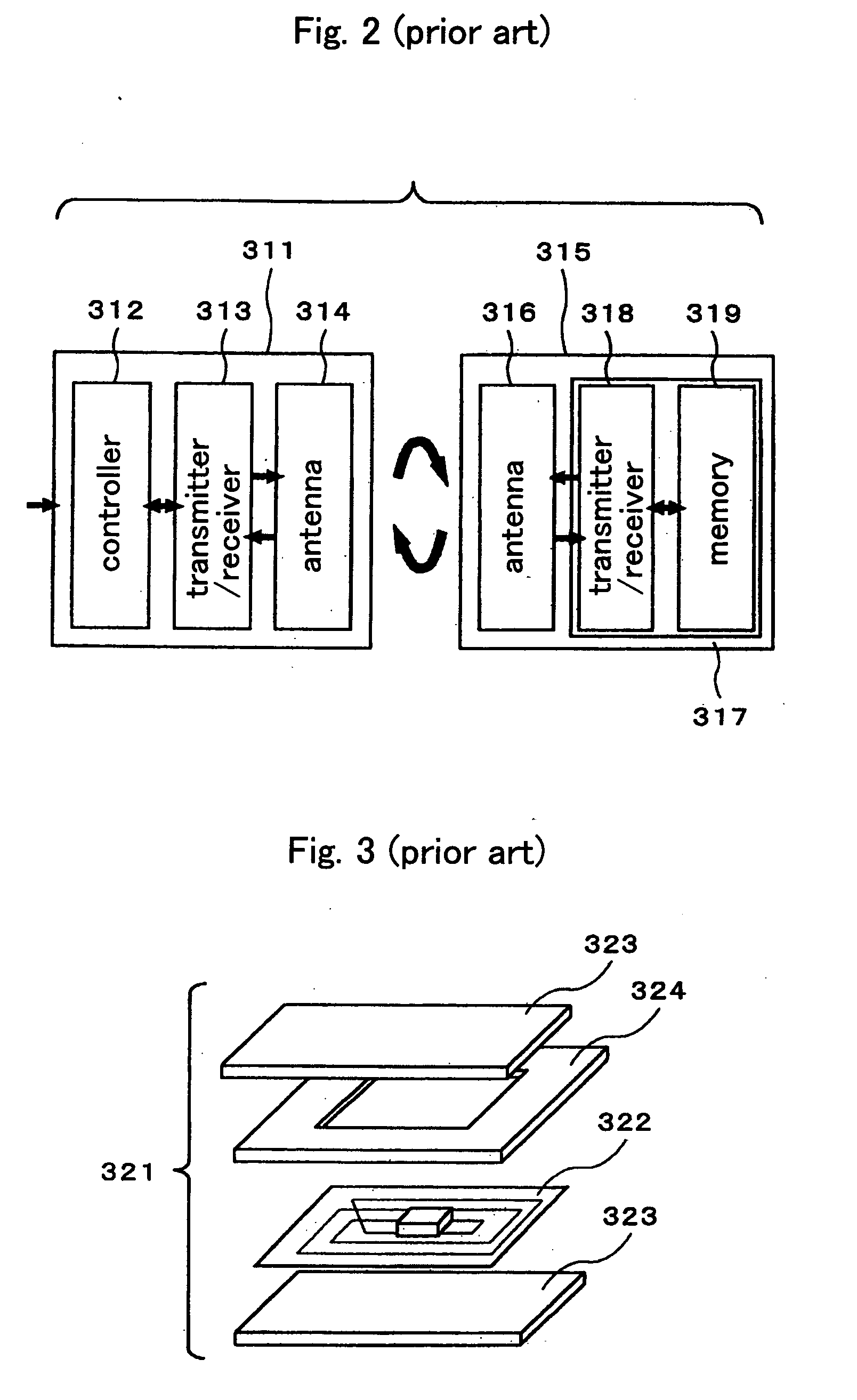RF device on insulating substrate and method of manufacturing RF device
a technology of insulating substrate and rf device, which is applied in the direction of substation equipment, electrical equipment, antennas, etc., can solve the problems of low durability, low reliability of the junction between these components, and separate rf devices, and achieves the effects of low cost, excellent durability, and communication capability
- Summary
- Abstract
- Description
- Claims
- Application Information
AI Technical Summary
Benefits of technology
Problems solved by technology
Method used
Image
Examples
first embodiment
[0060] An RF device according to the present invention will first be described below.
[0061] As shown in FIG. 4, the RF device according to the first embodiment of the present invention has insulating substrate 1 supporting rectangular signal processing circuit 2 and spiral antenna 3 that are integrally formed thereon. Insulating substrate 1 may comprise a glass substrate or a plastic substrate. In the illustrated embodiment, insulating substrate 1 comprises a glass substrate. Antenna 3 comprises a single wire wound in a rectangular spiral pattern. Generally, RF tag systems for use in a 13.56 Hz frequency band operate on the principle of electromagnetic induction for the RF tag to obtain electromotive forces from radio waves. Antenna 3 has opposite terminals connected to one side of rectangular signal processing circuit 2 that is disposed centrally on the surface of insulating substrate 1. Antenna 3 has an outermost pattern edge disposed along the outer profile edge of insulating sub...
second embodiment
[0115] A first modification of the present invention will be described below.
[0116] In the second embodiment described above, antenna 3 is formed by electrolytic plating as shown in FIGS. 10A through 10C. According to the first modification of the second embodiment, antenna 3 is formed by electroless plating as shown in FIGS. 11A and 11B. As shown in FIG. 11A, base film 61 which serves as a base for selectively growing an electrolessly plated film is formed on the entire surface of insulating substrate 1 by sputtering, for example. Then, base film 61 is patterned to the shape of antenna 3 by photolithography. Base film 61 is formed of aluminum or nickel, for example. Then, as shown in FIG. 11B, plated film 62 is formed on base film 61 by electroless plating. At this time, plated film 62 is selectively formed on base film 61. Plated film 61 is formed of nickel, copper, or gold, for example. Other details of the first modification of the second embodiment are identical to those of the...
third embodiment
[0123] First, an RF device according to the present invention will be described below.
[0124] In the first embodiment described above, only signal processing circuit 2 is disposed centrally on insulating substrate 1, as shown in FIG. 4. According to the third embodiment, as shown in FIG. 13, signal processing circuit 2 and memory circuit 81 are disposed adjacent to each other centrally on insulating substrate 1.
[0125] Memory circuit 81 comprises a ROM for storing information of an RF tag in advance and a DRAM or an SRAM for reading and writing information at the time of signal processing. The ROM, the DRAM, and the SRAM are fabricated by the process of manufacturing a CMOS according to the second embodiment described above. Other structural details of the third embodiment are identical to those of the first embodiment described above.
[0126] In the third embodiment, since memory circuit 81 is integrally disposed on the glass substrate on which signal processing circuit 2 and antenna...
PUM
 Login to View More
Login to View More Abstract
Description
Claims
Application Information
 Login to View More
Login to View More - R&D
- Intellectual Property
- Life Sciences
- Materials
- Tech Scout
- Unparalleled Data Quality
- Higher Quality Content
- 60% Fewer Hallucinations
Browse by: Latest US Patents, China's latest patents, Technical Efficacy Thesaurus, Application Domain, Technology Topic, Popular Technical Reports.
© 2025 PatSnap. All rights reserved.Legal|Privacy policy|Modern Slavery Act Transparency Statement|Sitemap|About US| Contact US: help@patsnap.com



